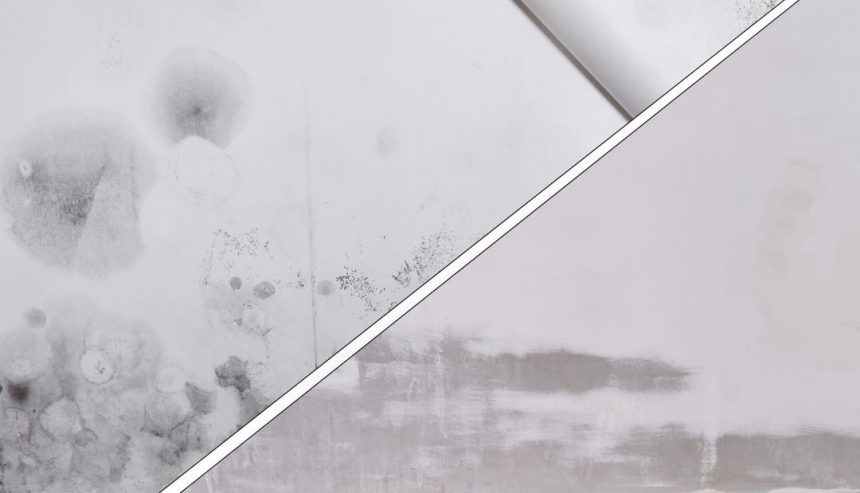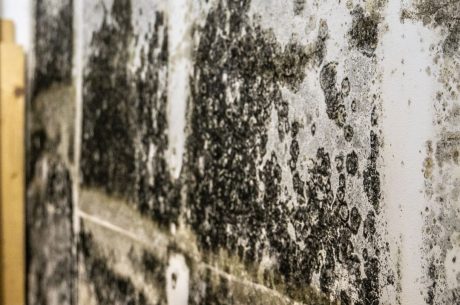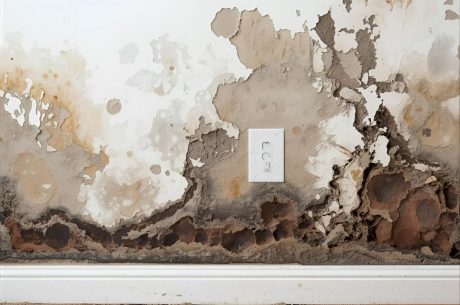Mold is more than just an unsightly nuisance—it’s a serious health and structural concern that can silently affect your home. Understanding the mold remediation process is essential for homeowners in Hempstead, NY, and surrounding areas. This comprehensive guide will walk you through the steps of mold remediation, why it’s crucial, the tools professionals use, and how to prevent future infestations.
Table of Contents
🧪 What Is Mold Remediation?
Mold remediation is the professional process of identifying, isolating, removing, and preventing mold growth in a property. Unlike routine cleaning, remediation addresses the root cause of mold: excess moisture. It’s not just about removing visible mold; it’s about ensuring your home is safe, healthy, and free from hidden infestations.
Mold can grow behind walls, under flooring, inside HVAC systems, and in other concealed areas. Without proper remediation, spores can spread, causing recurring issues and posing health risks.

⚠️ Why Mold Remediation Matters
Mold thrives in damp, poorly ventilated areas and can begin growing within 24 to 48 hours of water exposure. If left unchecked, mold can have serious consequences:
Structural Damage
Mold feeds on organic materials like wood, drywall, and insulation. Over time, this weakens the structural integrity of your home. For example, a small leak behind a bathroom wall can silently damage studs and drywall, leading to expensive repairs if ignored.
Health Risks
Mold spores can become airborne, entering your respiratory system. Health effects range from minor allergic reactions—such as sneezing, itchy eyes, and congestion—to more severe issues like asthma attacks, chronic sinus infections, and other respiratory complications. Vulnerable populations, including children, the elderly, and those with weakened immune systems, are particularly at risk.
Reduced Property Value
Homes with a history of mold problems are often harder to sell. Mold remediation ensures your property remains safe, structurally sound, and market-ready.
🛠️ The Mold Remediation Process
Professional mold remediation typically follows a structured process. Here’s what to expect:
1. Assessment and Inspection
A certified professional begins with a thorough inspection to determine the extent of the mold problem. Tools like moisture meters and infrared cameras help detect hidden water behind walls, under flooring, and in ceilings.
In Hempstead, local weather conditions—high humidity and frequent rainfall—can increase the likelihood of hidden water damage, making early detection essential.
2. Containment
To prevent mold spores from spreading, the affected area is sealed off using plastic sheeting and negative air pressure machines. Containment is particularly important in multi-story homes, offices, or commercial buildings where spores could easily travel to other areas.
3. Air Filtration
HEPA (High-Efficiency Particulate Air) filters remove airborne mold spores. Air scrubbers and negative air machines are used to clean the air continuously during remediation, protecting both the home and the remediation team.
4. Removal of Contaminated Materials
Porous materials such as drywall, insulation, carpeting, and ceiling tiles that are heavily infested with mold are removed and properly disposed of. Non-porous surfaces—like metal, glass, and certain plastics—can often be cleaned and sanitized effectively.
5. Cleaning and Sanitizing
All affected areas are cleaned with antimicrobial solutions to eliminate remaining spores. HEPA vacuums, damp wiping, and professional-grade cleaning solutions ensure that mold does not return.
6. Drying
Moisture control is crucial to prevent future mold growth. Dehumidifiers, air movers, and proper ventilation are used to thoroughly dry the area. Even small pockets of hidden moisture can reignite mold growth if left untreated.
7. Restoration
After remediation, restoration may involve repairing or replacing damaged walls, flooring, insulation, or other structures. This step ensures the property returns to its pre-mold condition and is safe for occupants.
🧰 Tools and Equipment Used in Mold Remediation
Professional mold remediation relies on specialized equipment to ensure complete removal:
- HEPA Vacuums: Capture mold spores from surfaces and prevent them from spreading.
- Air Scrubbers: Continuously filter airborne spores during remediation.
- Moisture Meters: Detect hidden moisture in walls, floors, and ceilings.
- Infrared Cameras: Identify water damage behind walls without demolition.
- Dehumidifiers and Air Movers: Reduce moisture levels and accelerate drying.
These tools, combined with the expertise of certified technicians, ensure that mold is thoroughly removed and prevented from returning.
🧼 DIY Mold Cleanup: When Is It Safe?
Minor mold issues (less than 10 square feet) can sometimes be handled by homeowners. The U.S. Environmental Protection Agency (EPA) recommends:
- Wearing protective gear: gloves, goggles, and an N-95 respirator.
- Scrubbing mold from hard surfaces with detergent and water.
- Thoroughly drying the area after cleaning.
However, larger infestations, mold in HVAC systems, or mold caused by contaminated water (like sewage or floodwater) require professional remediation. Attempting DIY cleanup in these situations can spread spores, worsening the problem.
🚫 Common Mistakes to Avoid
Even well-intentioned homeowners can make mistakes that worsen mold issues:
- Painting Over Mold: This only masks the problem and doesn’t remove mold. The spores continue to grow beneath the paint.
- Using Bleach on Porous Surfaces: Bleach may kill surface mold but won’t penetrate porous materials like drywall, allowing mold to regrow.
- Ignoring the Root Cause: Mold thrives on moisture. If leaks or dampness aren’t addressed, remediation is only temporary.
🛡️ Preventing Future Mold Growth
Prevention is always better than remediation. Key strategies include:
- Control Humidity: Maintain indoor humidity below 50% using dehumidifiers or air conditioning.
- Fix Leaks Promptly: Address plumbing, roof, and window leaks immediately.
- Improve Ventilation: Use exhaust fans in bathrooms and kitchens; ensure proper airflow in basements and attics.
- Regular Inspections: Check areas prone to moisture, like basements, crawl spaces, and behind appliances.
- Monitor Seasonal Changes: Hempstead’s humid summers can promote mold growth; proactive measures like using dehumidifiers during high humidity months are recommended.
💡 Local Insights for Hempstead Homeowners
Hempstead’s climate—with its high humidity, frequent rainfall, and older housing stock—can make homes particularly susceptible to mold. Homes with basements, crawl spaces, and attics are at higher risk, especially after storms or plumbing leaks.
Professional mold remediation companies in Hempstead often provide:
- Emergency inspections and water damage assessment.
- Mold testing and air quality monitoring.
- Insurance claim assistance for mold-related damages.
- Preventative solutions tailored to local conditions.
🧭 Conclusion
Mold remediation is more than just cleaning—it’s a structured, professional process designed to remove mold, address the source of moisture, and restore your property safely. Ignoring mold can lead to costly repairs, health risks, and long-term property damage.
If you suspect mold in your home or office in Hempstead or nearby areas, don’t wait. Professional mold remediation can protect your health, your property, and your peace of mind.
Call to Action
📞 Contact a certified mold remediation specialist today for a professional inspection and remediation plan. Early intervention is key to keeping your home safe, healthy, and mold-free.



